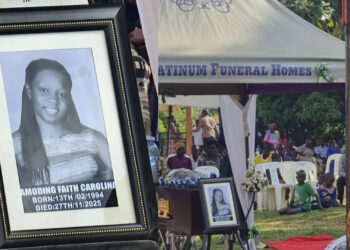By Gilbert Akampa Kakurugu,
HEALTH
Breast cancer used to be a dreaded disease and a silent killer, but these days, it’s no longer a threat. This is according to Miriel Kabigarire, a palliative care nurse at Mobile Hospice Mbarara. She revealed that breast cancer is now survivable if detected at early stages.
Kabigarire called on the government to increase cancer awareness and extend cancer treatment services to lower health facilities because many people still find it hard to access cancer services, which are only available at the Mbarara Regional Referral Hospital in the whole of western Uganda.
Breast cancer occurs when cells in the breast grow out of control. Different types of breast cancer can develop from different kinds of breast cells. Majority of breast cancers start in either the breast ducts (tubes that carry milk to the nipple) or the lobules (glands that produce milk) and are known as invasive ductal carcinoma and invasive lobular carcinoma, respectively. Other less common types of breast cancer include inflammatory breast cancer and ductal carcinoma.
It’s worth noting that, while breast cancer is more common in women, men can develop it too. The lifetime risk of breast cancer for men is about one in 883.
To detect breast cancer early, Kabigarire recommends that women perform a monthly self-breast examination, which can be done at the comfort of their home. She explains that these examinations can be done in the shower, while lying down on the bed, or in front of a mirror.
Some of the early signs of breast cancer that women should look out for include: New lump in the breast or underarm (armpit),Thickening or swelling of part of the breast, Irritation or dimpling of breast skin,Redness or flaky skin in the nipple area of the breast, Pulling in of the nipple or pain in the nipple area, Nipple discharge other than breast milk, including blood, Any change in the size or shape of the breast, Pain in any area of the breast among others.

Breast cancer occurs more frequently in the left breast than in the right, but no one knows why.
“We at Hospice encourage women to always perform the monthly self-breast examinations that can be done at the comfort of your home either in the shower or laying down on the bed or in front of your mirror. This could help you detect the early signs of the cancer,” Kabigarire said.
To perform a self-breast examination, lie down on a flat surface, such as your bed, with a pillow under your right shoulder. Place your right arm behind your head and use your left hand to feel your right breast. Use the pads of your three fingers (index, middle, and ring) to apply gentle pressure in small, circular motions. Cover the entire breast area, moving from the outside to the center. Make sure to examine the entire breast, including the nipple and the area around it, and note any lumps, changes in texture, or unusual sensations. Repeat the process for your left breast using your right hand and feel your underarm area.
In conclusion, early detection of breast cancer is crucial in the fight against the disease. Women should perform monthly self-breast examinations and seek medical attention if they suspect any unusual changes in the breast.








































